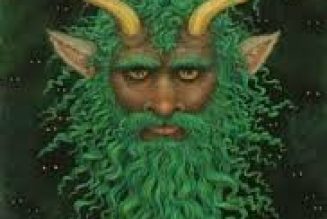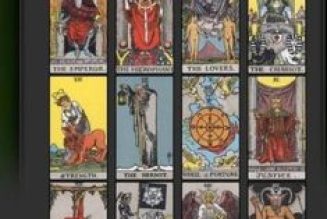The Wheel of the Year is a term used to describe the eight festivals celebrated by many modern Pagans. These festivals mark the changing seasons and the cycles of nature. While the Wheel of the Year is a modern concept, it has its roots in ancient pagan traditions.
The origins of the Wheel of the Year can be traced back to the pre-Christian Celtic and Germanic peoples who lived in Europe. These people celebrated seasonal festivals that marked the changing of the seasons and the cycles of nature. With the arrival of Christianity, many of these pagan festivals were absorbed into Christian celebrations, such as Christmas and Easter. However, the traditions and rituals of these festivals continued to be passed down through generations, and many of them have been revived in modern times.
Today, the Wheel of the Year is celebrated by many different Pagan traditions, including Wicca, Druidry, and Heathenry. Each festival has its own unique traditions and rituals, but they all share a common theme of honouring the cycles of nature and the changing of the seasons. The Wheel of the Year is a way for modern Pagans to connect with the natural world and to celebrate the beauty and wonder of the earth.
Prehistoric Roots
Early Human Societies
The origins of the wheel of the year can be traced back to prehistoric times. Early human societies were hunter-gatherers and relied on the natural cycles of the seasons for survival. They observed the cycles of the sun, moon, and stars and developed a deep understanding of the changing seasons.
Agriculture and Seasonal Cycles
With the advent of agriculture, humans began to rely on the seasons even more. They developed a system of seasonal cycles which allowed them to plant and harvest crops at the appropriate times. This system was based on the observation of the natural world and the cycles of the sun, moon, and stars.
The wheel of the year was an important part of this system. It was a way to mark the changing seasons and to celebrate the cycles of life and death. It was a way to honour the gods and goddesses of the natural world and to seek their blessings for the coming year.
The prehistoric roots of the wheel of the year can still be seen today in many modern celebrations. From the solstices and equinoxes to the festivals of the harvest, these celebrations are a reminder of our connection to the natural world and to the cycles of life and death.
Ancient Civilisations
The origins of the Wheel of the Year can be traced back to ancient civilisations that used the cycles of the sun and moon to mark the passing of time. These civilisations included the Egyptians and Celts.
Egyptian Calendar
The ancient Egyptians used a solar calendar that consisted of 365 days, divided into 12 months of 30 days each, plus an extra five days at the end of the year. The calendar was based on the annual flooding of the Nile River, which marked the beginning of the new year.
The Egyptians also had a lunar calendar that was used for religious purposes. It consisted of 12 months of 29 or 30 days each, depending on the sighting of the new moon. This lunar calendar was used to determine the dates of religious festivals and ceremonies.
Celtic Festivals
The Celts were a group of people who lived in Europe during the Iron Age and Medieval Period. They had a deep connection to the natural world and used the cycles of the sun and moon to mark the changing seasons.
The Celtic calendar was based on the lunar cycle and consisted of 13 months, each with 28 days. The extra day at the end of the year was considered a time of transition between the old and new year.
The Celts celebrated four major festivals throughout the year, known as the Wheel of the Year. These festivals were:
- Samhain (31st October) – marking the end of the harvest season and the beginning of winter.
- Imbolc (1st February) – celebrating the first signs of spring and the return of the sun.
- Beltane (1st May) – marking the beginning of summer and the fertility of the land.
- Lughnasadh (1st August) – celebrating the first harvest and the abundance of the land.
Each of these festivals was a time of celebration, feasting, and religious ceremonies, and marked an important point in the cycle of the year.







